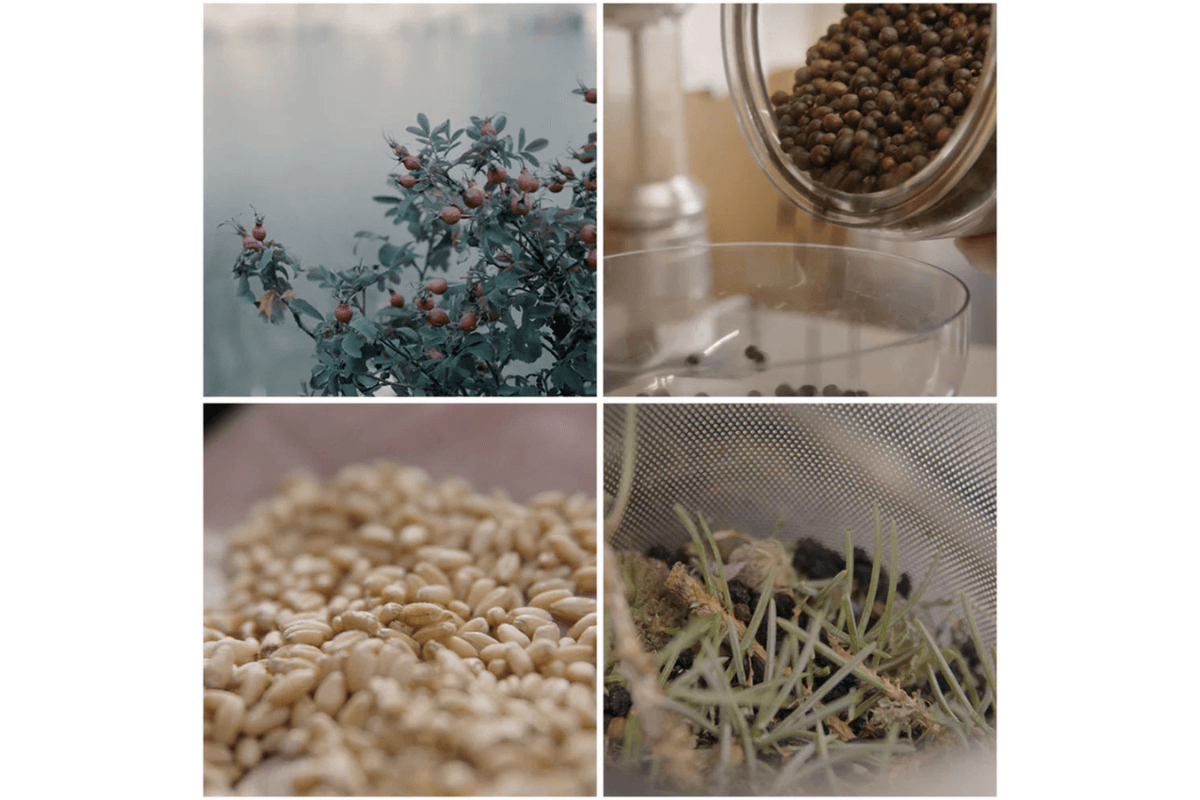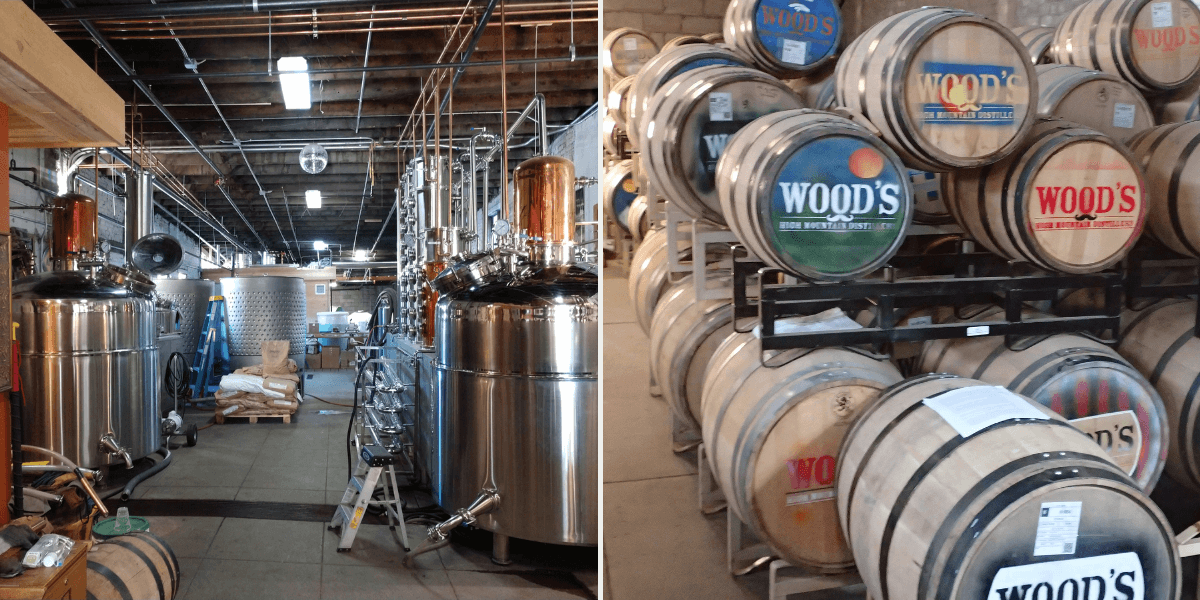
08/11/2024 Colorado’s Distilling Industry Thrives with Innovation and Collaboration.
Colorado’s distilling scene is as diverse and rugged as the state’s iconic landscape. Leading the charge is Lee Wood, President of the Colorado Distillers Guild and co-founder of Wood’s High Mountain Distillery. With over 100 distilleries thriving across the state, Wood is championing a collaborative spirit that pushes the boundaries of craft distillation. From tackling legislative challenges to spearheading sustainable initiatives, Wood’s leadership ensures that Colorado’s distillers are not only surviving but carving a distinct niche in the global market. In this conversation, we explore the unique environment shaping Colorado’s spirits and the creative forces driving the industry forward.
The Colorado Distillers Guild's mission is to unite and promote Colorado's distillers. How do you ensure that both smaller craft distilleries and larger producers benefit equally from the Guild's initiatives?
Most distilleries in Colorado tend to be small craft producers; however, the Guild's mission supports distilleries of all sizes. Even though our larger distilleries are still relatively small compared to those found in major spirits-producing regions around the world; our mission to support Colorado-made spirits, tourism to our tasting rooms, and legislative support are effective for distilleries of all sizes.

Image: Colorado Distillers Guild.
What are the most pressing legislative challenges currently facing Colorado’s distilling industry, and how is the Guild working to address them?
Colorado just passed a fairly sweeping set of bills regarding beverage alcohol in the last legislative session, so we are working on sorting out the effects of that new legislation on our businesses. In addition, a 2022 ballot initiative passed that opened grocery and convenience stores to sell wine along with full-strength beer. This has had a difficult effect on retail liquor stores and, by extension, craft spirits. We are looking at ways to adapt to that change as well as general changes in market conditions. From a legislative perspective, we are always looking at ways to open markets for our customers and to help support the entire craft spirits supply chain from farmers to consumers.
The Colorado Spirits Trail app has become a popular way to promote local distilleries. How do you see this evolving to enhance consumer engagement with Colorado distilleries further?
Tourism is a major economic driver in Colorado. We host millions of annual visitors from around the world. We also have over 100 licensed distilleries in all corners of our state and it’s a natural fit to support that tourism with our Colorado Spirits Trail. We worked with a development partner to create an app that allows us to feature lots of information about our member distilleries and help enhance the visitor experience for both local and out-of-state spirits enthusiasts. The app continues to develop all the time and with the incredible support of the Colorado Tourism Office (CTO), we’re looking at a major advertising and promotional push in 2025.
Tasting room visitation is a critical element to most Colorado distilleries and the app has been a useful tool to help bring folks into both the tasting rooms and to parts of the state that they may not have otherwise visited. It’s a win-win for all.

Image: CDG Distillers Tour.
Beyond promotion, what specific resources and support does the Guild provide to help distillers navigate complex regulatory environments and business challenges?
The Guild maintains relationships with major national organizations (DISCUS, ACSA, ADI, etc.) that provide resources for production, marketing, sales, and compliance, as well as regulatory action at both the local and national levels. In addition, we do regular networking events where we invite sponsors to present their solutions to our members.
The Guild is a small, completely volunteer-run organization so we also maintain a culture of camaraderie and support for our member distillers. As a result, we also provide extensive informal support for one another. In fact, just yesterday a member had a question about an export issue. We were able to put him in touch with one of our board members, an expert in export management, who was able to guide this member to a solution.
How are Colorado distillers incorporating sustainability into their operations, and how is the Guild supporting these efforts?
Sustainability has been an issue for a long time for distilleries. The Guild has long championed our members’ efforts in reducing water, energy, and packaging in the production of our spirits. Among the efforts is to encourage moving toward sustainably farmed, locally grown grains, potatoes, and other raw materials. Colorado is a leading producer of barley, rye, wheat, potatoes, and other inputs for distilled spirits (and beer). We are working to encourage local sourcing of as many raw materials as possible and several distilleries, such as Dry Land Distillers and Laws Whiskey House, are working toward sourcing from farms using regenerative practices and developing heirloom varieties. These practices can cut down on water and herbicide use and transportation emissions while supporting our local agriculture communities.
Distilled spirits have traditionally been packaged in glass and moving away from glass to more sustainable materials is a challenge. There is beginning to be both availability and awareness for alternative packaging. For example, Wood’s is packaging two of our spirits in 750ml aluminum bottles which are infinitely recyclable and much lighter weight to transport than glass. While there is a long way to go progress is being made Coloradans love the outdoors and take an active interest in sustainable practices. This has led to two of our members, Marble Distilling and Montanya Distillery, being recognized as leading distilleries working toward minimizing water and energy consumption in their distilleries.

Image: The Dry Land team began experimenting with native and local ingredients such as prickly pear cactus, spruce, and a drought-tolerant heritage wheat. The goal was to use ingredients true to Colorado.
Wood’s High Mountain Distillery is known for its high-altitude distillation. How do this process's unique challenges and benefits influence your approach to creating spirits, especially whiskey?
Wood’s Distillery is at just over 7000’ elevation so lower air pressure from altitude means that distillations are at lower temperatures than sea level. We’ve adapted our distillation process to accommodate the altitude but it’s not as big a factor as one might expect. However, what we are really interested in is how altitude affects whiskey maturation. Colorado has low relative humidity, significant changes in barometric pressure, and large daily and seasonal temperature swings. What we’ve found is that this unique maturation environment leads to very intense maturation. There tends to be a high rate of loss to the angels share and we see very high proofs at full maturation because of greater loss of water than alcohol. The climate factors make it tricky to balance barrel extraction and oxidation (the two key functions of maturing whiskey in barrels). This can, of course, be mitigated with climate-controlled rick houses or dunnage-style rick houses but we choose to let it ride with the environment and let the barrels tell us when they’re ready. We are super excited about Colorado’s unique maturation environment and are confident that it will help put Colorado whiskies on the map as a source of truly unique spirits.

Image: Wood’s High Mountain Distillery new stills and Barrel arts.
When you started Wood’s High Mountain Distillery, you chose to focus on malt whiskeys with specialty malts like cherry wood-smoked and chocolate malt. What inspired this creative direction, and how has it shaped your brand’s identity over the years?
My brother (and co-founder) and I both preferred malt whiskies over bourbon when we launched so we always knew that was the direction we wanted to go. There were very few all-malt whiskey makers in 2012 and even fewer that were using malted barley, malted rye, and malted wheat in the mash bill. The motivation for using specialty malts came from the well-developed craft beer scene in Colorado and how brewers use specialty malts to affect the flavor of beer. There’s a pioneering and innovative brewing scene in Colorado and we wanted to bring that spirit to distilling through innovative and interesting mash bills. Our flagship releases, Tenderfoot American Malt and Alpine Rye Whiskey, and Dawn Patrol Colorado Single Malt Whiskey all have unusual mash bills and are very distinctive as a result. Doing things a little differently is a part of life in rural Colorado mountain towns so it’s fitting for us to follow our own path.

Image: Wood’s product family.
The Colorado craft distilling scene is known for innovation. How do you see collaboration between distilleries helping to push the boundaries of what Colorado spirits can offer to both national and global markets?
The oldest distilleries in Colorado are just now turning 25 so it’s still a young industry. When it first became a thing here, there were very few resources for craft distillers to learn the trade. As a result, collaboration was necessary since we were all trying to figure out how to lay the track while driving the train. The culture has endured and helped drive collaboration and innovation especially since, as a state, we are still a small volume producer. As we learn how to work with the unique production environment and raw materials afforded to us the overall quality has increased, and the world is beginning to recognize the unique spirits coming out of the state. It takes time but we are slowly carving out our niche in the global spirits scene.
[[relatedPurchasesItems-31]]
While Colorado spirits are celebrated within the state, what strategies are being used to expand their presence nationally and internationally? What role does the Guild play in these efforts?
Again, because the total volume of spirits produced annually in Colorado is relatively small compared to major spirits-producing states (KY, IN, CA, TX, NY, etc.) it has been a long process to establish recognition around the country and the world of our spirits. Fortunately, Colorado is well known for its mountains, skiing, hiking, and outdoor activities in general and we have a heavy tourist visitation. This allows us to leverage the Colorado “brand”, we don’t have to explain to customers where we’re from. Folks generally accept that our products will be made with high-quality ingredients and pure water and that helps elevate the perception of Colorado-made products. The Guild’s role in expanding awareness outside the state manifests itself primarily through its support of the Colorado Spirits Trail, which works to highlight the number and diversity of Colorado’s distilleries.
As president of the Colorado Distillers Guild, what are your long-term goals for the organization, and how do you envision the Colorado distilling community evolving in the next five to ten years?
My goals for the Guild (which are actually set by the fantastic members of the Board) are three-pronged. The first is to continue to push for parity and fair legislation at the Statehouse. The second is to continue to enhance visibility and awareness through the Colorado Spirits Trail and the app that supports it. The final prong is to ensure that there is a community for distillers to network and get support for any questions and concerns that may arise. I would like to see as many distillers participate as possible since we are much stronger together than as individuals.

Image: Winning products from Colorado Distillers Guild Members at the 2024 Bartender Spirits Awards: (L-R) Code Four 115 Proof Cask Strength Straight Bourbon, Colorado Straight Bourbon, Cask Strength Bourbon, Colorado Mountain Incline Rye Whiskey, Cafe Miel.
As the Colorado distilling industry continues to evolve, one thing is clear: the state’s distillers, guided by leaders like Lee Wood, are committed to pushing boundaries while staying rooted in collaboration and sustainability. Whether it’s navigating new legislative landscapes or exploring the unique opportunities offered by Colorado’s high-altitude climate, Wood’s vision for the future remains bold yet grounded. In a world increasingly looking for authentic, locally crafted products, Colorado spirits are well on their way to making a lasting global impact. With the Guild’s support and Wood’s leadership, the future of distilling in the Rockies looks incredibly bright.
In conversation with Malvika Patel, Editor and VP, Beverage Trade Network
Also Read:
Breaking Barriers: Brian Facquet on New York's Direct-to-Consumer Spirits Revolution
Sustainable Spirits: Tom Dubay's Vision for the Connecticut Spirits Trail
Rediscovering Heritage: Scott Blackwell on Reviving Forgotten Grains in Distilling



